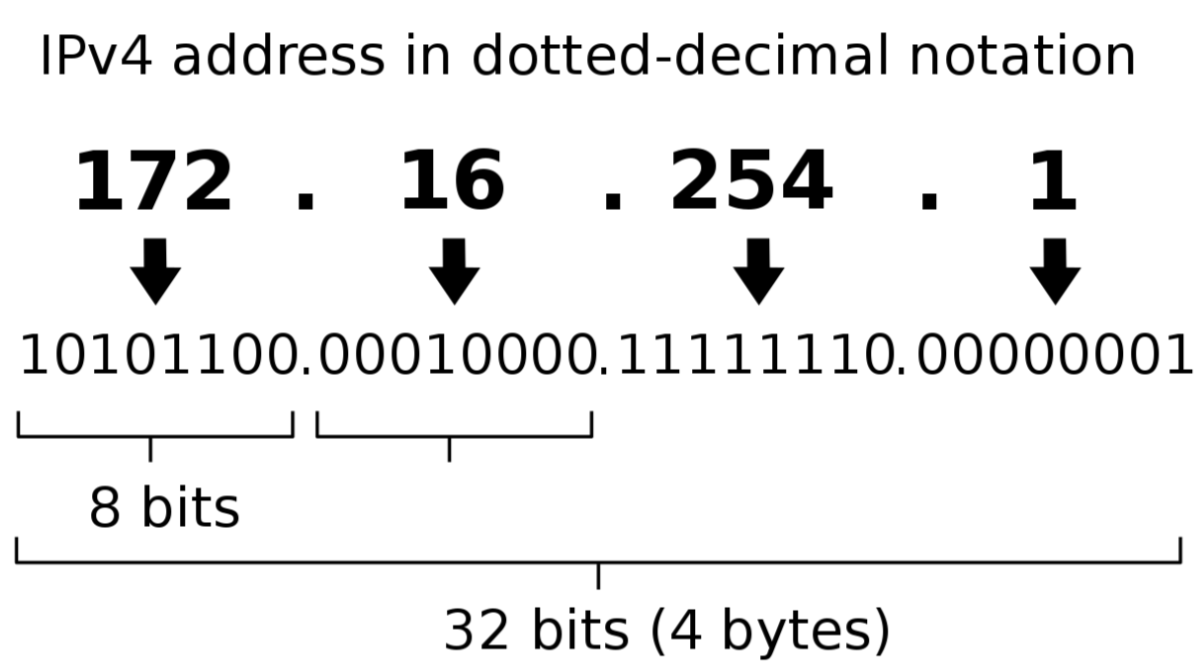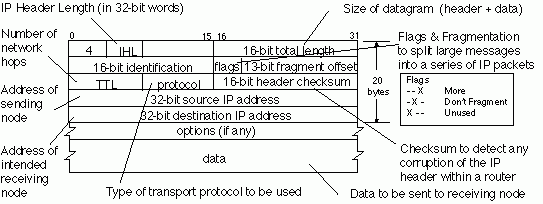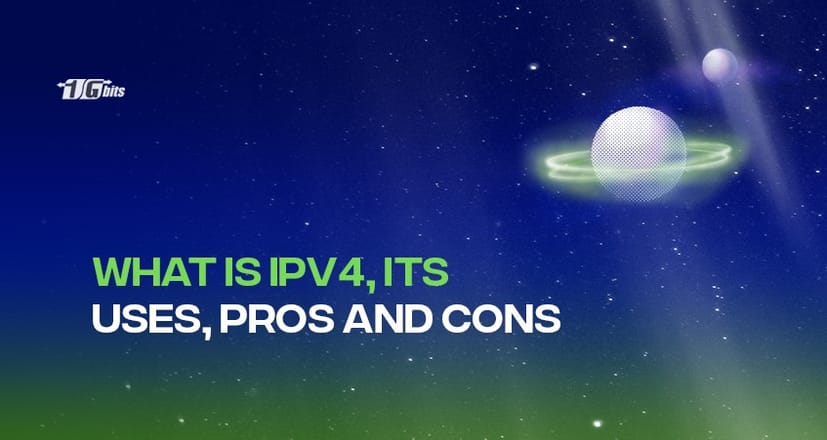Today, nothing is possible without data communication and networking. The Internet protocol is used as the networking protocol to maintain consistent networking. It has now embedded within every business field in the market that no business can sustain without networking. You will come across two types of majorly used Internet protocol versions: IPv4 (version 4) and IPv6 (version 6) (IPv4 IPv6). But, most of the devices connected across the globe fall under the IPv4 addressing scheme.
With the increase in technological advancements and the increased number of devices on the Internet, IPv4 failed to scale and register all devices. Thus, IPv6 came into the picture to provide extended address space to anticipate the growth of the Internet. Still, people use the old IPv4 model due to its compatibility, stability, and other features.
This article will go through the depths of IPv4, its working, pros, and cons.
What is IP (Internet Protocol)?
Internet protocol helps in defining each device on the network uniquely. An IP address is also considered the home address for any website. An IP address is a series of four numbers separated by a dot. Each number ranges from 0 to 255, resulting in 4 billion unique addresses that were considered more than sufficient—for example, 192.158.1.38.
IP addresses are not arbitrary, as they are designated by the Internet Assigned Numbers Authority (IANA), a part of a non-benefit association set up in the US in 1998. This authority ensures the security of the web and makes it available to all. For checking the IP address of your system, you need to go to Terminal and type-
> ipconfig

What is IPv4
IPv4 is version 4 of the Internet protocol introduced in the market in the mid-1980s. IPv4 address comes with four numbers separated by dots, where each number ranges from 0-255. These four numbers uniquely identify each site system on the Internet. These numbers might be difficult to remember; thus, DNS took over to covert the IP address into human-readable URLs that are easy to remember.
To learn more about specific types of IP addresses, such as the benefits of having a dedicated IP, check out our article on what is a dedicated IP.
IPv4 address is 32-bit that has created 4 billion addresses. Suppose you want to access the Google website; you need to have its DNS address (www.google.com). Whenever you go to this link, the URL will be converted to the IP address (x.x.x.x) by DNS (Domain Name Server), and the Google page will open in front of you.

Features of IPv4-
- You will get a connectionless protocol.
- It allows you to create a superficial virtualized communication layer supporting devices.
- It requires less memory for storing the address.
- Today, millions of devices use IPv4 addresses and address space across the globe.
- You can leverage its wide range of video libraries and conferences.
- It supports unicast, broadcast, and multicast styles of addresses.
- IPv4 addresses can be private or public, where private addresses are privately unique, and public addresses are publicly unique.
How does IPv4 work
The IPv4 protocol works at the internet layer in the TCP stack. It has two significant responsibilities- logical addressing and packet routing.
- Logical addressing
IP addresses are also referred to as the 'logical' addresses. These addresses are not connected to a particular device permanently. The administrator can allocate them to a network for creating a network topology accordingly.
IP addressing helps identify the source and destination hosts connected on the same LAN or different networks in different geographical areas. IP routing forwards packets from the source to the destination covering hop to hop, irrespective of their physical infrastructure. A packet has to travel across different networks to reach its specified destination.
- Routing process
The process starts with a user's device, or host, that creates an IP specifying the destination address and setting the source address to itself. The packet will then move to the default gateway (router) at the end of that LAN.
Based on the mentioned IP address, the packet will choose the path, such as moving to the router that belongs to the ISP of the user. ISP stores a table with all the routes looks for the best way for the packet's destination and then routes the packet.
Then the packet crosses several routers to find the best next hop. At last, the packet will reach the router of the destination IP address and send it to the destination.
IP packet remains the same till it reaches the destination; other than each, the router will read and decapsulate the lower level header and trailer and again encapsulate the packet in a new header and trailer for the next hop.
Like a postal address, an IP address is divided into the first part specifying a general network and the second part specifying a specific host (like a house number). You can set the routes manually or learn using the routing protocols of other routers in the network. In contrast, look up the routing table to see if the route matches a portion of the address or the exact address.
These routes could be programmed manually (static routes) or learned from other routers automatically using routing protocols. For those looking to configure static routes effectively, understanding how to set a static IP is essential; check out our guide on how to configure a static IP in CentOS 7 for detailed instructions.
IPv4 packet header-

IPv4 Address Classes
What does an IP address look like? Here is an IP address example: 192.168.1.56
There are different types of IP addresses in use and the above-mentioned example belongs to one of them. Do you know which IP class this address belongs to?
The IPv4 IP address space comes within five classes: A, B, C, D, and E. Each class offers a specific IP address range. Class A, B, and C are primarily used on the Internet. But, class D and class E are reserved IP addresses for particular uses. We have mentioned these classes in detail.
Class A Public & Private IP Address Range
Class A addresses are helpful for networks with a large set of hosts. Class A allows for 126 networks, as it uses only the first octet for the network ID. it specifies the first bit in the octet is zero. The remaining seven bits are used to complete the network ID. The 24 bits in the last three octets represent the host's ID (numbers 1-27), resulting in around 17 million hosts per network.
- Public IP address Range: 1.0.0.0 to 127.0.0.0
- Private IP address Range: 10.0.0.0 to 10.255.255.255
- Number of Networks: 126
- Number of Hosts per Network: 16,777,214
Class B Public & Private IP Address Range
Class B addresses are useful for networks with sizes from medium to large. This class uses the first two-octet, resulting in 16,384 networks. The first two bits in the first octet are always 1 0, while the other six complete the network ID, including the second octet. The 16 bits in the third and fourth octet represent host ID and allow approximately 65,000 hosts per network.
- Public IP address Range: 128.0.0.0 to 191.255.0.0
- First octet value range from 128 to 191
- Private IP address Range: 172.16.0.0 to 172.31.255.255
- Number of Networks: 16,382
- Number of Hosts per Network: 65,534
Class C Public & Private IP Address Range
Class C addresses work well in small local area networks (LANs). It uses the first three octets, resulting in 2 million networks. The first three bits of the first octet are always 1 1 0. in contrast, the other 21 bits of the first three octets create the network ID. The last octet (8 bits) determines the host ID created for 254 hosts per network.
- Public IP address Range: 192.0.0.0 to 223.255.255.0
- Private IP address Range: 192.168.0.0 to 192.168.255.255
- Special IP Range: 127.0.0.1 to 127.255.255.255
- Number of Networks: 2,097,150
- Number of Hosts per Network: 254
Class D IP Address Range
These IP addresses are used for multicasting, which allows a single host to simultaneously send a single stream of data to several hosts across the Internet. Real-time stock market data is delivered from one source to many brokerage companies, mainly used for audio and video streaming.
- Range: 224.0.0.0 to 239.255.255.255
- Number of Hosts per Network: Multicasting
Class E IP Address Class
These IP addresses are only reserved for research purposes.
- Range: 240.0.0.0 to 255.255.255.255
- First octet value range from 240 to 255
PS: Check out our Subnet Mask Cheat Sheet here.
IPv4 Addressing Modes
IPv4 supports the following types of addresses.
- Unicast addressing mode
The destination address field will have the IPv4 address of the destination. It is a one-to-one transmission, such as sending an email to a dedicated receptionist. In this mode, the data will be sent to a single host.
- Broadcast addressing mode
In this case, the data will be sent to all the connected hosts within a network. Any host within the network can process the incoming packet. The destination address field contains the particular broadcast address. It is a type of one to all transmission, such as sending an email to several recipients.
- Multicast addressing mode
It works on the concept of both unicast and broadcast addressing mode. It can be of type one-to-many or many-to-many transmission. The marketers generally use it to cater to thousands of potential customers who broadcasts addressing mode.
For more information on how to find someone's IP address, check out our guide on how to get someone's IP.
Advantages of IPv4
There are several reasons for using IPv4. Below we have mentioned some of those reasons.
- Encryption- when people communicate using a public medium, the transmission needs to be secured to ensure the privacy of the data. IPv4 comes with proper security measures in place to encrypt the data.
- Flexibility- IPv4 ensures high flexibility by effectively combining the addresses, resulting in a more efficient routing process.
- Topology support- almost every network topology supports IPv4 protocols as it comes with simple prefixes that can fit inside them efficiently.
- Device connectivity- with IPv4, you can connect different types of devices across the network. It ensures easy identity verification and can be done without using the NAT.
Disadvantages of IPv4
Despite several advantages, there are some disadvantages also that we have mentioned below.
- Design- you need to arrange IPv4 physically or naturally. If you want to design IPv4 physically, you will require DHCP, whose setup is perplexing.
- Security- due to the old implementation of IPv4, it is not suitable for securing the applications and devices from today's and advanced threats.
- Access space- now, there is no more IPv4 address space available.
- Geographical location restriction- most of the address space of IPv4 is only restricted to the US, as they are involved in distributing the address space.
Conclusion
The internet protocols are essential for transmitting your data over the network in a secured manner. One of the most commonly used internet protocols is IPv4, and most of the devices on the network have an IPv4 address. The IPv4 protocol is the standard for encrypting data transmission and is supported by all network topologies.
However, the IPv4 address space has been exhausted, leading to the need for a new internet protocol with more bits to accommodate the growing number of devices globally. This is where IPv6 comes into play. Despite the advantages of IPv6, such as a larger address space, there has not been a complete transition due to compatibility issues, as many devices are still configured for IPv4 protocols. If you're setting up a VPS, you might consider an IPv6 VPS to future-proof your network and improve performance.
This article highlights the basics of IPv4 and how it works. For users looking for enhanced security and privacy, a residential IP VPS could be a great option to explore, offering a more reliable connection that mimics a real residential network.
Did you know that when you type in "Find my IP address" or "What's my IP" on Google, you can instantly see your public IP address? Try it and let us know in the comments below if it worked!
You can also learn how to update your IP address by checking out our guide on how to change your IP address, which offers step-by-step instructions for both dynamic and static IP configurations.
People also read:






